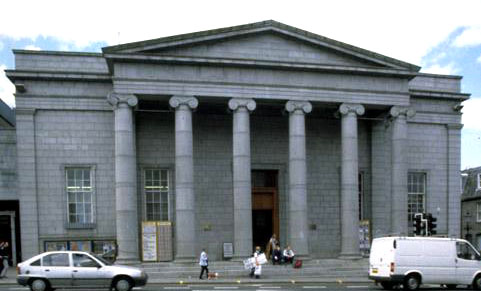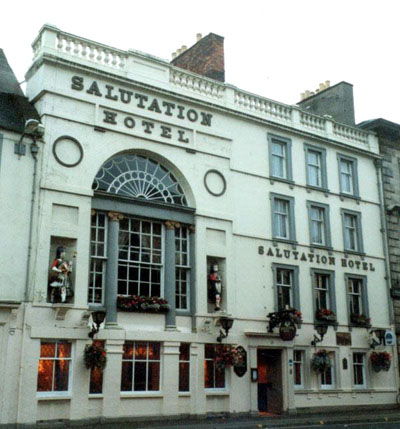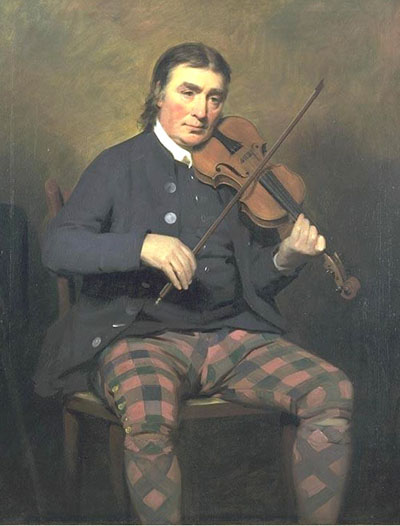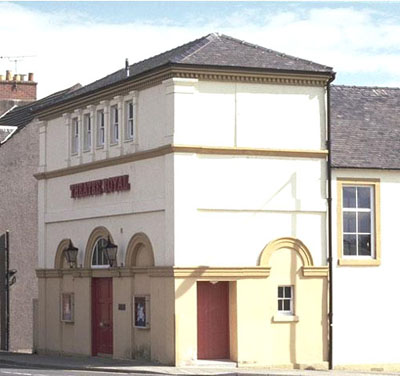Much public life was carried on out of doors, with regular processions and bonfires to celebrate local or national events, and anniversaries such as the King's birthday. By the early nineteenth century such events also included 'illuminations', which involved the placing of lights in every window along the route. Few pictures survive of eighteenth century processions, though some of the banners carried by trades incorporations or Masonic or other lodges survive, as do the musical instruments which were an important part of such ceremonies.
Later eighteenth century social life is perhaps most closely associated
with ‘assembly rooms’, where public dances were held. Dancing
became fashionable from the 1770s, and dancing masters advertised their
services in many small towns.
Other places of public assembly included newspaper reading rooms, and coffee houses, where men could meet and discuss business or politics.

Assembly Rooms, Aberdeen, designed by Archibald
Simpson, and built in 1820.
© SCRAN/Aberdeen City Council
Some towns had purpose-built assembly rooms, in others assemblies were held in council chambers, county ballrooms, or in what we would now call a ‘function suite’ within the best inn. Sometimes public and private combined, with a public assembly room linked to the dining room of an inn.

The Salutation Hotel, Perth, said to have
been established in 1699. Like many major eighteenth century inns, it
had a ballroom, dining room and associated facilities for large functions.
© SCRAN/Douglas Mackenzie
Music at assemblies was provided by fiddlers or other instrumentalists in ‘bands’. The most famous fiddler of the period was Niel Gow (1727-1807). He played for many dances, and his son Nathaniel (1763-1831) led a band which performed at many balls in Perthshire and neighbouring counties.

Portrait of Niel Gow, violinist and composer
(1727-1802), by Sir Henry Raeburn (1756-1823), 1787.
© SCRAN/Scottish
National Portrait Gallery
Theatrical performances became fashionable by the 1780s. Most involved
travelling troupes performing out of doors or in public halls, but a few
leisure towns,
including Ayr, Cupar and Kelso, had purpose-built theatres.

The Theatre Royal, Dumfries,
which opened in 1792, and is now the only surviving Georgian theatre in
Scotland.
© SCRAN/Dumfries
& Galloway Museum Service
| Next | ||